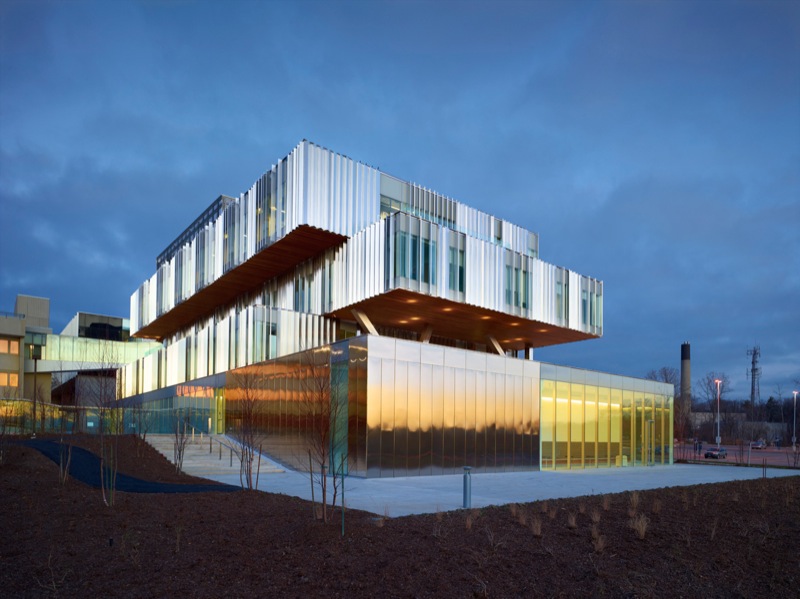
The functional programming of TDHSC supports three primary user groups: the new Mississauga Academy of Medicine, the Department of Biomedical Communications and the Department of Anthropology and Forensics.The program at TDHSC includes video conference-ready lecture theatres, classrooms, seminar rooms, faculty and administrative offices, and instructional and research laboratories.
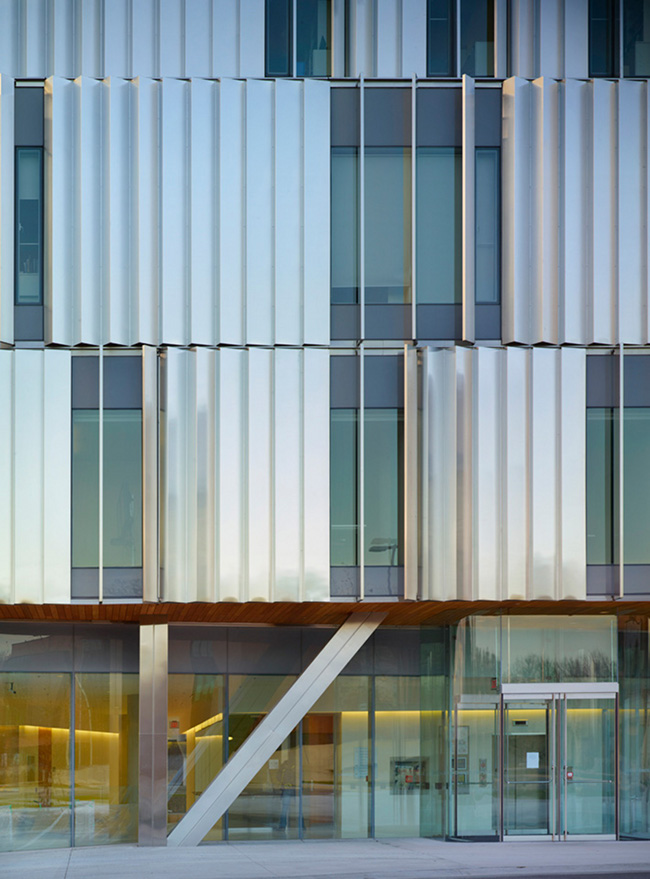
Each of the three user groups has very distinct space, adjacency and identity requirements. A series of stacked ‘boxes,’ where each ‘box’ shrinks or enlarges from floor to floor to best facilitate desired program adjacency requirements while maximizing views and access to daylight. The outdoor spaces created between the stacked ‘boxes’ accommodate accessible terraces overlooking gardens of indigenous planting. The teaching, office spaces and laboratories float in greenery.
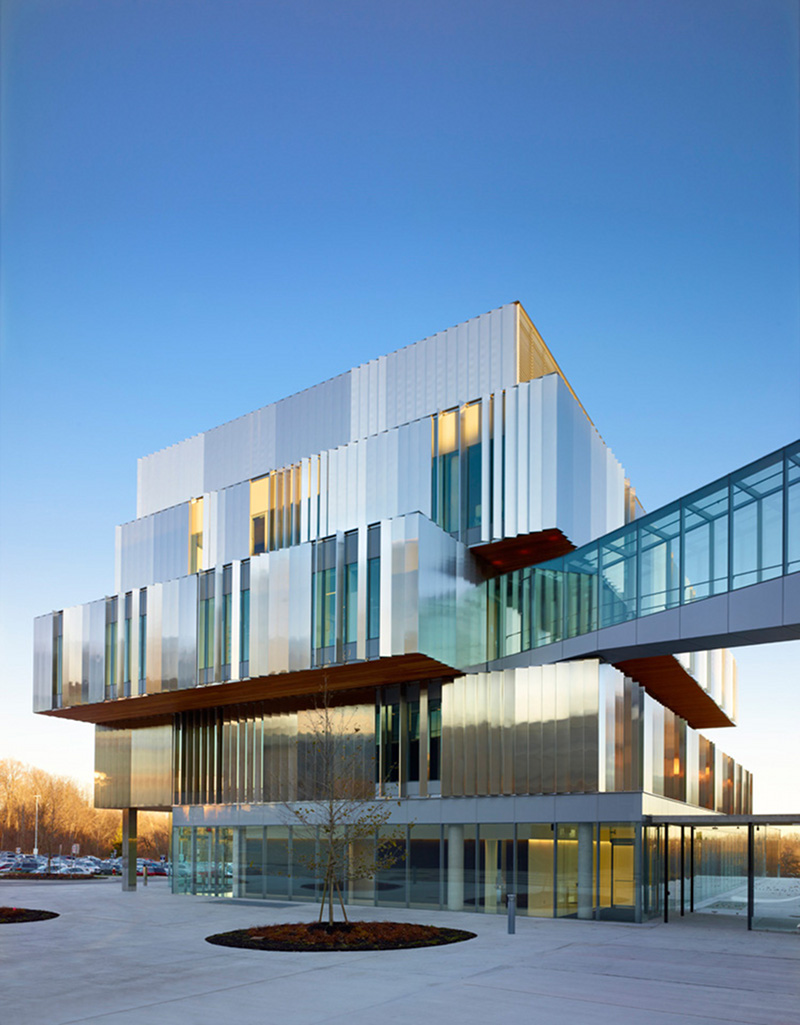
TDHSC is situated on sloped terrain rising up from the outer campus Ring Road, and will landmark the entrance to a future proposed Academic Quad. The shifting floor plates of TDHSC accentuate the soft landscape to the east south and west while the building’s north face, in its vertical uniformity, will provide a formal façade to the Academic Quad. The faceted stainless steel façades capture both natural and ambient artificial light ensuring its landmark presence is articulated 24/7.
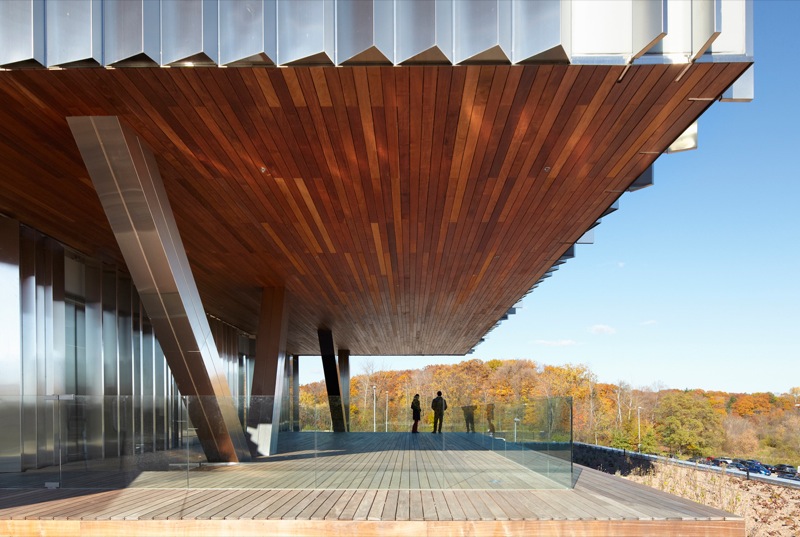
The configuration of the stainless steel panels is determined by an arithmetic sequence of angles 15-30-60-90 that imposes both a varied appearance to the cladding that acknowledges the Campus’ admired natural setting and strategically minimizes solar gain at the glazed areas. The reflective properties of the stainless steel panels and their configuration also has a bioclimatic benefit; in the summer solar heat is deflected from the building envelope and in the winter the warm air trapped within the panels provides an insulating blanket of tempered air around the building envelope.
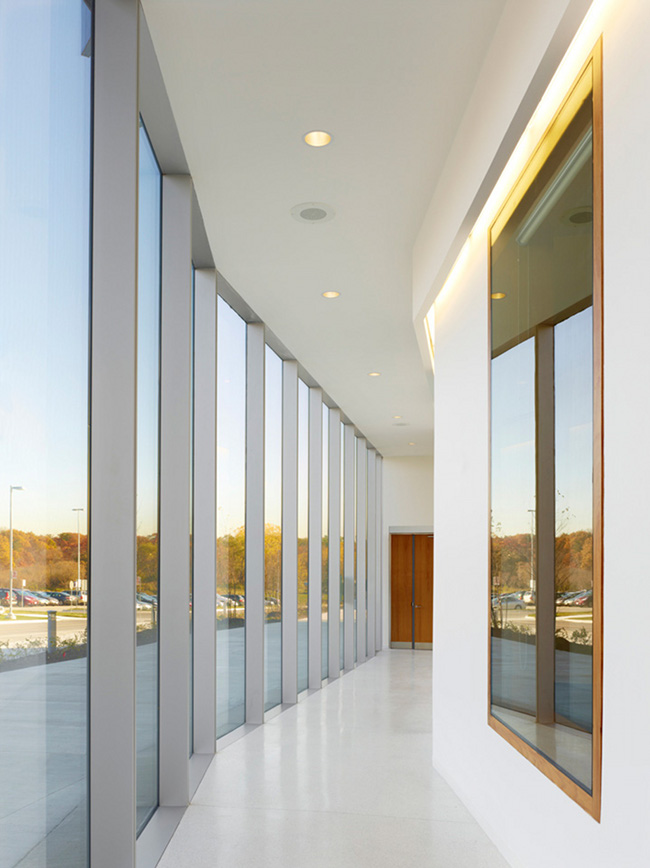
In keeping with the University of Toronto’s mandate for sustainable building, the Health Sciences Complex has been designed for LEED Gold certification.
Significant Sustainable Design Features are as follows:
– The TDHC will be provided with direct access to public transit. in the future the existing surface parking on the north portion of the construction site will be eliminated and replaced by the proposed academic Quad.
– The TDHC is serviced by a central district energy plant eliminating the requirement for independent boilers, chillers and cooling towers. the district energy source reduces both the physical and carbon footprint of the building and the noise levels associated with exterior cooling tower on a site designated as the campus’ principal public realm.
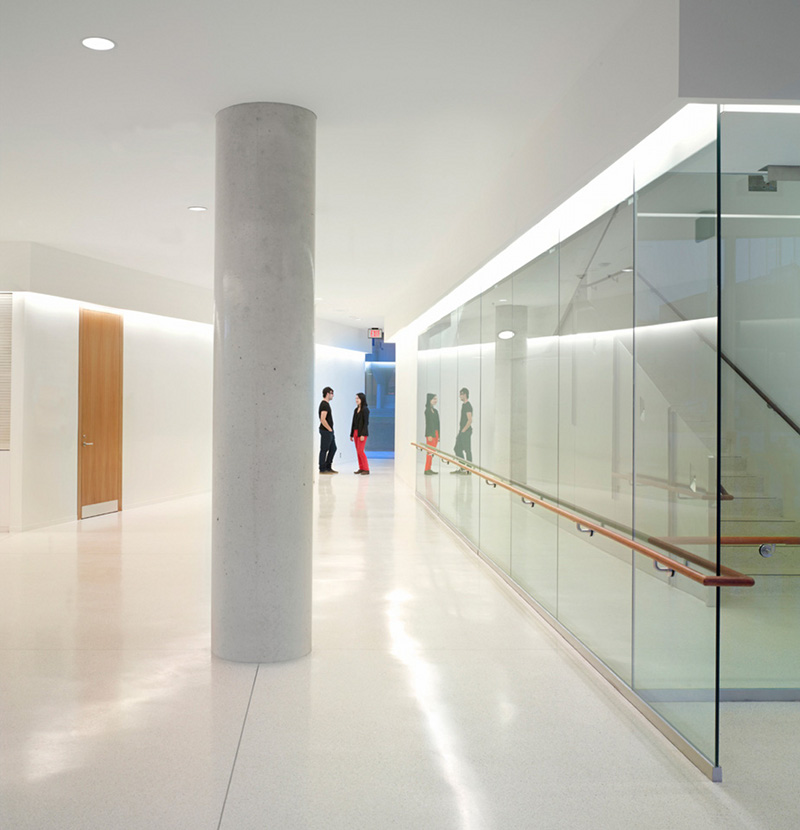
– The university of toronto Mississauga campus is situated within the credit river watershed.the university has demonstrated a commitment to effectively managing storm water run-off to the credit river through a series of retention ponds. the tdHSc’s storm water management design will further minimize the building’s impact on the existing storm water infrastructure by the employment of vegetative roofs to control storm water run-off and storm water cisterns to utilize gray water for all washrooms.
– The TDHC will be constructed of building materials where the post-consumer and post-industrial recycled content exceeds 15%. the project will also divert more than 75% of its construction waste from landfill sites to recycling facilities.
– The TDHC’s exterior envelope is designed as a dual skin system; an insulated and water tight primary skin and a independent second outer skin to reduce heat gain utilizing stainless steel panels to reflect heat and exterior louvers to shade glazed areas.
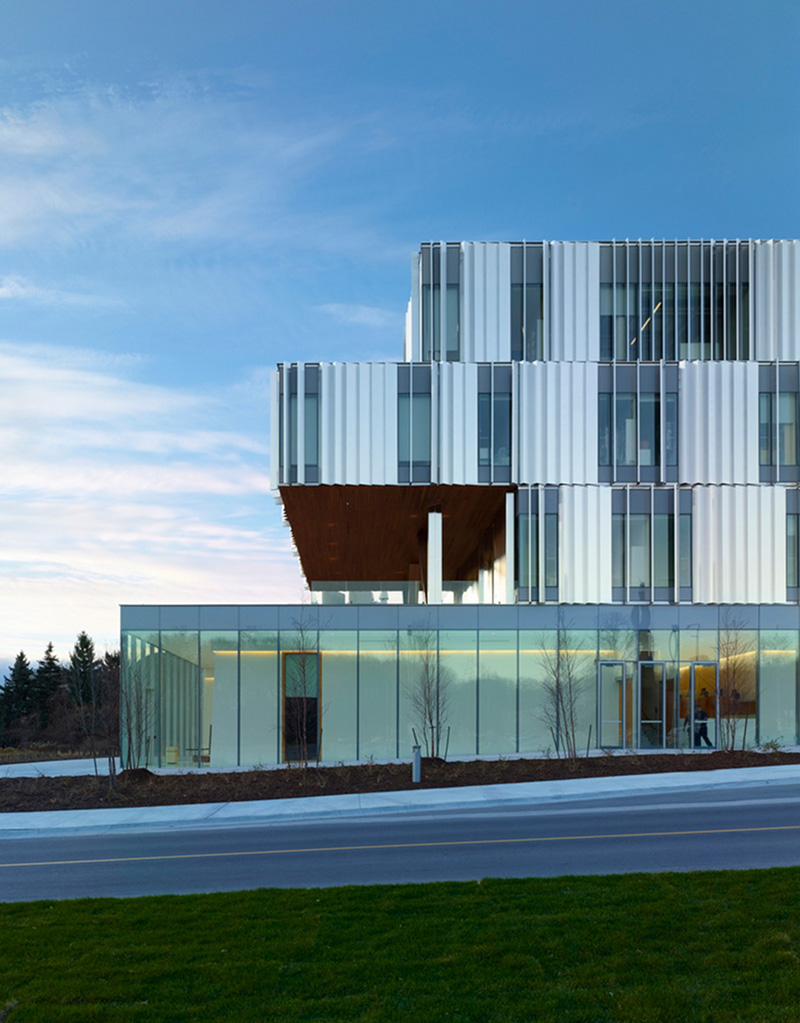
– The TDHC’s individual floor plates are proportioned to ensure all permanently occupied offices are provided with operable windows for natural ventilation. all lecture theatres, classrooms, labs, seminar rooms and public corridors have access to direct or borrowed natural light.
– All occupied spaces will be provided with have individual lighting occupancy sensors and controls.
– All occupied spaces will be provided with individual heating and cooling controls.
– The TDHC is equipped to reclaim heat from all mechanical exhaust air systems including lab exhaust air.
Project Details:
Location: Mississauga, Canada
Type: Educational – Public
Cost $25M
Date 2011
Size 6,000 m2
Client: University of Toronto
Architects: Kongats Architects – www.kongatsarchitects.com
Design and Project Architect: Alar Kongats
Project Manager: Danielle Lam-Kulczak
Project Team: Philip Toms, David Sasaki, Sukie Leung, Alessia Sopplesa, Dieter Jensen, Andrea Ling, Tyler Walker, Derek McCallum, Eric Van Ziffle


